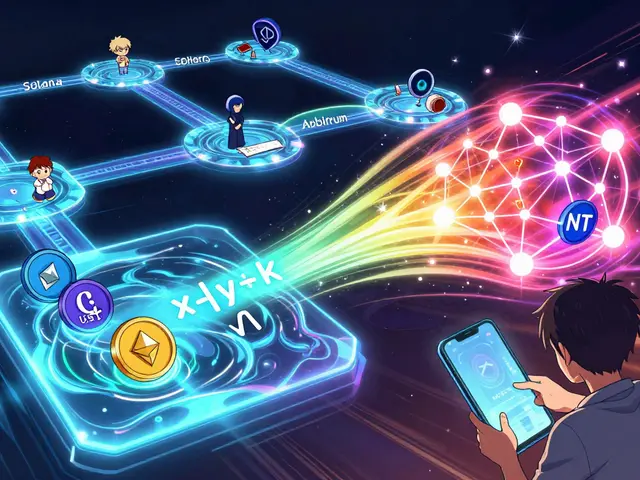Blockchain Bridges: How Chains Connect and Why It Matters
When you send ETH from Ethereum to Polygon or SOL from Solana to Avalanche, you’re using a blockchain bridge, a tool that connects separate blockchains so tokens and data can move between them. Also known as cross-chain interoperability, it’s what lets you use the same wallet on multiple networks without swapping coins manually. Without these bridges, each blockchain would be its own island—useful on its own, but locked off from the rest of the crypto world.
Most DeFi users rely on bridges to access better rates, lower fees, or new apps. If you’re staking on Arbitrum but want to trade on Terra, a bridge makes it possible. But here’s the catch: cross-chain interoperability, the ability for different blockchains to communicate securely isn’t perfect. Over $2 billion has been stolen through flawed bridge designs since 2021. Some bridges trust a small group of validators; others use complex smart contracts that hackers can exploit. That’s why you’ll see posts here warning about shady platforms like BITEJIU or btcShark—many scams hide behind the promise of easy cross-chain swaps.
Not all bridges are created equal. Some are built by big teams like LayerZero or Chainlink, with audits and multi-sig controls. Others pop up overnight with no code transparency. The best ones let you track your transaction across chains in real time. The worst ones vanish with your funds. That’s why knowing the difference matters. You’ll find guides here on how to spot safe bridges, what to check before bridging, and why some tokens lose value the moment they cross over.
Behind every bridge are multi-chain wallets, wallets that support multiple blockchains so you can manage assets across networks without switching apps. These wallets—like Coin98 or MetaMask—make bridging feel seamless. But if your wallet doesn’t support the target chain, or if the bridge doesn’t recognize your token, you’re stuck. That’s why posts here cover wallet setups, token approvals, and how to recover from failed swaps.
And it’s not just about moving tokens. Bridges enable tokenized real estate, gaming NFTs, and even insurance protocols to work across chains. That’s why you’ll see topics like RWA tokenization and blockchain gaming here—they depend on bridges to function at scale. But if the bridge breaks, so does the whole system.
You’ll find real reviews here—not hype. Posts that break down how bridges actually work, which ones have been hacked, and which ones still have trust issues. No fluff. Just what you need to know before you click ‘Confirm’ on that next bridge transaction.
Sidechains connect to main blockchains via two-way pegs and bridges, enabling fast, low-cost transactions. Learn how they work, where they're secure, and why they're not safe for large transfers.
Read More





